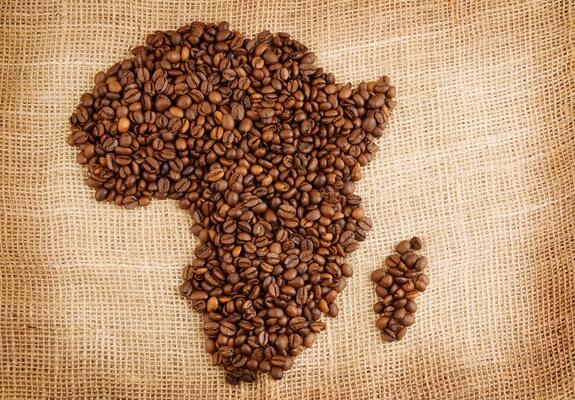
East African coffee farmers can add value to their crop, ITC report finds
A new ITC study explores ways for East Africa coffee farmers to bring in higher returns, from better sales in local markets to setting up innovative partnerships.
East Africa produces some of the world’s most valuable specialty coffees, yet farmers in the region pocket only a minuscule share of the profits. Farmers could grab a bigger piece of the pie by participating in higher-value activities that add value to their crop, says a new report by the International Trade Centre (ITC).
More than 90% of coffee is exported as a raw or ‘green’ beans, and developing countries handle most of the transformation that adds value, according to More from the cup: Better returns for East African coffee farmers.
The report, launched at the African Fine Coffees Conference and Exhibition in Mombasa, Kenya, is a springboard to discuss how farmers can get better prices for raw beans, learn about branding and consumer marketing, and develop business partnerships in foreign markets.
‘Looking at the international value chain that delivers the “$5 cup of coffee,” less than 1% of the price remains in the hands of the men and women who cultivated the crop,’ writes ITC Acting Executive Director Dorothy Tembo in the report. ‘Almost all value is created after the farm gate. Even allowing for the expected returns of the retailer, enough value should be generated to allow farmers a greater share of the global earnings.’
Farmers in East Africa, already struggling with poverty and numerous other challenges, were hit particularly hard when coffee prices dropped to a 12-year low in 2019. The international benchmark price for coffee languished at less than $1 a pound for most of the year – 30% under the 10-year average and, for most coffee-growing countries, below production costs.
‘While consumption is booming, many origin countries that rely on coffee for foreign exchange earnings are facing a crisis in prices, as well as a longer-term challenge of sustainability,’ the report says. ‘Without mitigating solutions, climate change threatens to destroy large growing areas. Other problems include high production costs, low yields, urbanization, aging farming populations and lack of access to finance.’
New opportunities, new risks
New opportunities have emerged to set up direct-to-market sales channels and innovative relationships to roast, package and market coffee that would provide a much-needed boost to African farmers. One possibility is for producers to sell their coffee locally, as markets in East Africa remain largely untapped. Others are to export roasted coffee, sell through e-commerce channels or export raw coffee that is then roasted and packaged in the consuming country.
Direct trade, possibly through e-auctions, can bring in better average prices for green beans, the report says.
All of these options are challenging, explains the report, which uses examples and case studies from Africa and elsewhere to illustrate tried and tested value-addition models. It finds that East African coffee farmers could earn ‘significantly higher margins’ by developing direct sales to European markets, arranging for their raw beans to be roasted, packaged and marketed as branded coffee close to the end-consumer. Generating market awareness and repeat sales, however, is expensive and uncertain.
The study did not identify a single ideal role model. ‘Those that managed to achieve some presence for their roasted coffee in Europe appear to be exceptional cases,’ noted the report.



